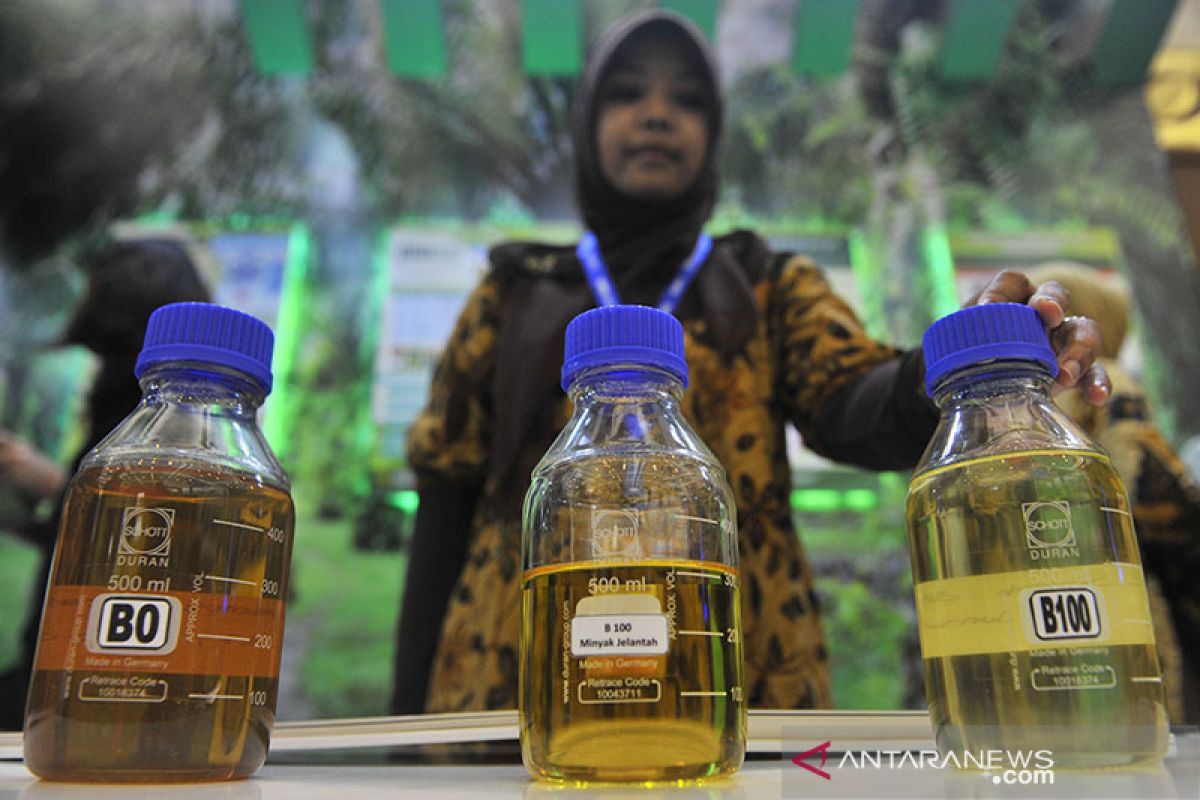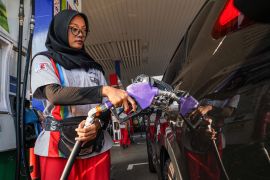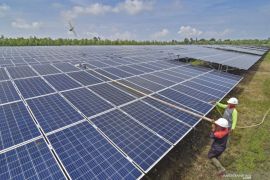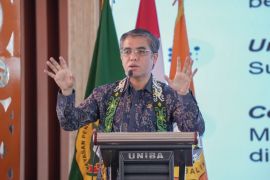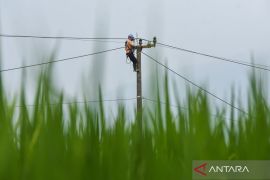Having signed and ratified the Paris Agreement in 2016, Indonesia is pursuing the goals of limiting a global temperature rise to below 2 degrees Celsius and global warming to 1.5 degrees Celsius above pre-industrial levels.
The country is pursuing the goals by reducing carbon dioxide (CO2), or decarbonization, in all aspects of development.
President Prabowo Subianto, in his Asta Cita goals, has also highlighted the government’s commitment to reduce the release of carbon emissions in the industrialization process to maintain environmental sustainability.
To show its solid commitment to decarbonization, the government has set an ambitious target of cutting greenhouse gas emissions by raising the total carbon emission reduction target in the Enhanced Nationally Determined Contributions (ENDC) from 29 percent, or 835 million tons of CO2, to 32 percent, or 912 million tons of CO2, by 2030.
The transition to new renewable energy is part of the strategy to achieve the ENDC target.
This includes reducing the consumption of fossil fuels and shifting to biodiesel made from crude palm oil (CPO).
Thus, the palm oil industry has a key role in realizing the energy transition to biodiesel in the country.
The government has implemented the B30 (30 percent biodiesel mix) use program from 2020 and the B35 (35 percent biodiesel mix) program from 2023.
Furthermore, the B40 (40 percent biodiesel mix) program is planned to be rolled out in January 2025, while the B50 (50 percent biodiesel mix) program is projected to be implemented in 2026.
The Ministry of Energy and Mineral Resources is also currently preparing a concept for the development of biodiesel up to B100 as part of efforts to realize energy self-sufficiency.
In this regard, the capacity of CPO production in the country will determine how fast Indonesia can realize its transition to biofuels.
Challenges
In pursuing the energy transition, the government is facing the challenge of balancing domestic CPO needs for the food, oleochemical, and biodiesel sectors with export needs so as to maintain national economic income.
This is essential because CPO exports make a large contribution to state revenue every year. In 2024, the government believes that the economic value of the palm oil industry may reach up to Rp775 trillion (around US$48.78 billion).
When the government made B30 use mandatory in 2020, the CPO production capacity that year stood at around 47 million tons.
Meanwhile, CPO allocated for biodiesel reached 8.46 million kiloliters, or equal to 8.4 million tons. The remaining was used for export purposes (28.27 million tons) and to meet other domestic needs, such as food and oleochemicals.
The B30 program that year helped save Rp63.4 trillion (around US$3.9 billion) in foreign exchange and reduce greenhouse gas emissions by 14.34 million tons of CO2.
It also generated jobs for more than 1 million people in the upstream sector as well as increased farmers' income.
Meanwhile, the use of B30 in 2021 led to greenhouse gas emission reduction of 24.6 million tons of CO2, or 7.8 percent of the new and renewable energy achievement target for 2030.
In 2023, Indonesia's palm oil production reached 50.07 million tons. Of the total, around 32 million tons was exported, 13.15 million kiloliters was allocated for biodiesel production, and the rest for the food and oleochemical sectors.
According to the government, for the mandatory B40 biodiesel program in January 2025, the palm oil industry must allocate at least 16.08 million kiloliters of CPO per year so as not to disrupt exports.
As for the B50 program, 19.7 million kiloliters of CPO will be needed per year.
Given the importance of balancing CPO production for meeting export and domestic needs for biodiesel, food, and oleochemicals, the Indonesian government has formulated a strategy to ensure that the B40 and B50 biodiesel programs do not hinder exports of CPO and its derivative products.
The strategy involves the Ministry of Agriculture intensifying and rejuvenating oil palm plantations to increase domestic CPO production.
Currently, the average palm oil productivity is still at 3 tons per hectare equivalent to CPO. However, through the two programs, the figure can be increased to 5–6 tons per hectare.
Meanwhile, the Ministry of Energy and Mineral Resources is addressing the issue of CPO shortage for the B40 program in 2025 by encouraging 24 biofuel business entities (BU BBN) to increase production by 0.3 million kiloliters.
The current installed capacity for CPO production is pegged at 15.8 million kiloliters.
As for the B50 program in 2026, the government is targeting to create seven to nine CPO processing factories to meet the need for conversion to biodiesel of 19.7 million kiloliters.
Thus, bolstering the domestic palm oil industry would also help realize the transition to biodiesel, considering that the productivity of the palm oil industry will play a strategic role in making the transition a success.
Related news: Indonesia still planning to roll out B40 program from Jan 1, 2025
Related news: BRIN develops demulsifier to combat palm oil waste
Related news: Govt preparing regulation on methane utilization from palm oil waste
Translator: Ahmad Muzdaffar, Raka Adji
Editor: Azis Kurmala
Copyright © ANTARA 2024
